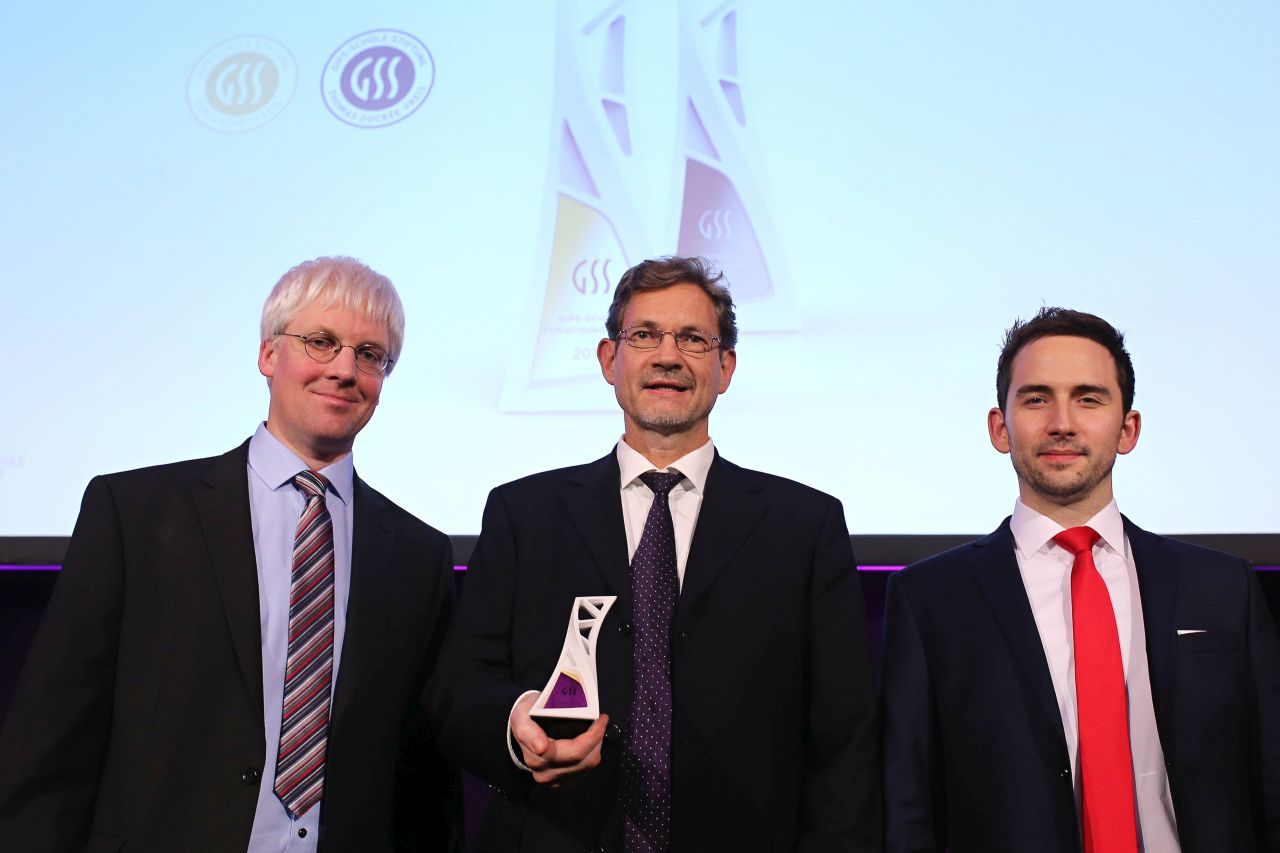Researchers of Karlsruhe Institute of Technology (KIT) demonstrated a novel plasmonic photodetector that is a hundred times smaller and much quicker than conventional detectors. For this, scientists Sascha Mühlbrandt, Christian Koos, and Manfred Kohl of KIT were granted this year’s Gips-Schüle Research Award in the amount of EUR 50,000 by the Gips-Schüle Foundation. Large numbers of these small components can be integrated on large-area silicon wafers, together with other optical and electronic components. In this way, capacity of future communication systems can be increased considerably.
“High-performance data networks are the backbone of digital society and the basis of megatrends, such as autonomous driving and Industry 4.0,” says the President of KIT, Professor Holger Hanselka. “Based on a long research tradition in this field, we want to develop smart technologies for the information society. Global challenges in many areas can only be mastered by rapid progress in information technology,” Hanselka continues. “We are very happy about the Gips-Schüle Research Award for our team of researchers.”
The light signals transporting the data in glass-fiber cables have to be converted into electrical signals for them to be understood by a computer. “With this component, we overcome the bottleneck of optoelectronic data transmission and can transmit the contents of a complete DVD in less than one second,” physicist Sascha Mühlbrandt of KIT explains. He carried out the work at the Institute of Microstructure Technology (IMT) and the Institute of Photonics and Quantum Electronics (IPQ) of KIT.
Interdisciplinary cooperation of several groups from nanotechnology, material sciences, and nanophotonics was decisive for the success of the work. “The high performance of the detector results from a novel component concept. Light waves are converted into much smaller electron light excitations, so-called plasmonic waves,” Manfred Kohl of IMT says. For the implementation of the concept, a special metal-semiconductor-metal transition of mushroom-like profile was developed. Its manufacture turned out to be a big technological challenge.
It is a special advantage of the new technical concept that the components can be integrated on large-area and low-cost silicon wafers together with other optical or electronic components. “The speed of the components can be further increased in the future,” Christian Koos, IPQ, is convinced. “We think that plasmonic components can also be used in wireless high-speed communication for seamless connection of radio antennas to glass-fiber networks.”
The award of the jury under its spokesperson and the Foundation’s supervisory board member Peter Frankenberg was handed over in Stuttgart on November 28, 2017.
About the Gips-Schüle Foundation
The Gips-Schüle Foundation supports research, young scientists, and academic education in Baden-Württemberg. The focus lies on STEM (science, technology, engineering, and mathematics) subjects as well as on interdisciplinary projects. In Baden-Württemberg, the Foundation based in Stuttgart cooperates closely with universities and research institutions and funds promising research projects through endowed professorships, scholarships, support of studies’ ambassadors encouraging secondary school graduates to study STEM subjects, and projects for the basic and advanced education of teachers. Every two years, the Foundation grants its research awards in the total amount of EUR 65,000. The Gips-Schüle Young Scientist Award in the amount of EUR 17,500 is granted annually.
www.gips-schuele-stiftung.de (in German only)
In close partnership with society, KIT develops solutions for urgent challenges – from climate change, energy transition and sustainable use of natural resources to artificial intelligence, sovereignty and an aging population. As The University in the Helmholtz Association, KIT unites scientific excellence from insight to application-driven research under one roof – and is thus in a unique position to drive this transformation. As a University of Excellence, KIT offers its more than 10,000 employees and 22,800 students outstanding opportunities to shape a sustainable and resilient future. KIT – Science for Impact.

